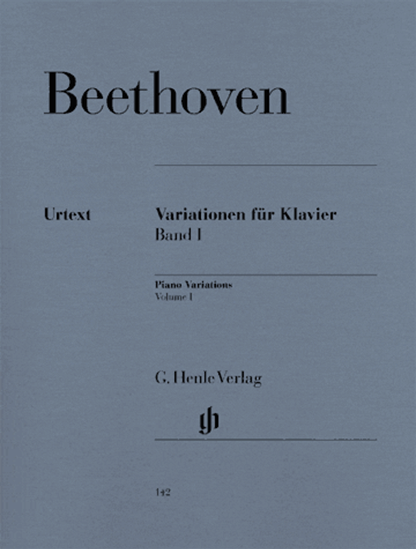Home > Salieri, Antonio > Falstaff, ossia Le tre burle (opera) > 10 Variationen über das Thema(Duett) "La stessa, la stessissima" aus der Oper "Falstaff" von A.Salieli
Beethoven, Ludwig van : 10 Variationen über das Thema(Duett) "La stessa, la stessissima" aus der Oper "Falstaff" von A.Salieli WoO 73
Work Overview
Publication Year:1799
First Publisher:Artaria
Instrumentation:Piano Solo
Genre:variation
Total Playing Time:10 min 30 sec
Copyright:Public Domain
Original/Related Work: Salieri, Antonio 《Falstaff, ossia Le tre burle (opera)》
Commentary (1)
Author : Inada, Saeko
Last Updated: July 1, 2008
[Open]
Author : Inada, Saeko
This is one of three piano variations composed in 1799. The opera by Antonio Salieri (1750-1825) that served as the theme premiered on January 3rd of that year, making the publication of Beethoven's variations the following month remarkably swift. However, what is truly surprising is the bold shift in variation technique observed in this work.
Unlike previous works such as WoO 72, the theme melody in this set of variations is transformed in every variation, making it difficult to discern. From the very first variation, the melody is already replaced by an ascending figuration, with only the accompanying chords and rhythm retaining a trace of the original. It can be said that this set of variations marks a departure from the easily recognizable variations of the past, moving towards a new direction seen in his middle and late period works.
Furthermore, it is noteworthy that the beginning of the sixth variation is polyphonic. The fugal writing, particularly characteristic of his late period, is already attempted here.
Then, in the long final variation, marked "alla austriaca" (in the Austrian style), the meter changes to 3/8. Over a sustained B-flat, the tonic, rhythms reminiscent of folk dances such as the Ländler are played. Such character variations also suggest a connection to his late works. Finally, these dance-like variations gradually disintegrate, and the theme itself returns as if nothing had happened, bringing the work to a close.
PTNA & Partner Channel Videos(2items)
Reference Videos & Audition Selections(1items)
Sheet Music
Scores List (4)

(株)全音楽譜出版社

(株)音楽之友社





